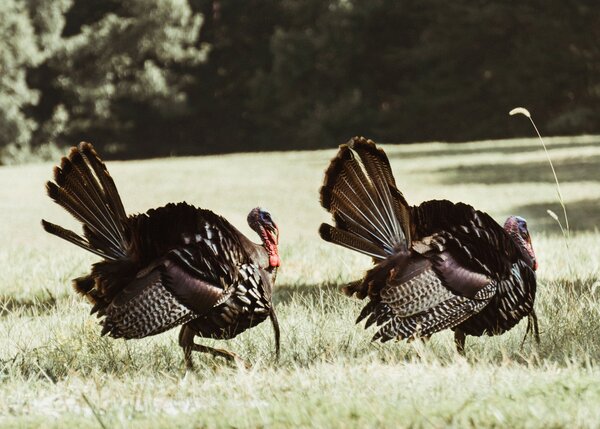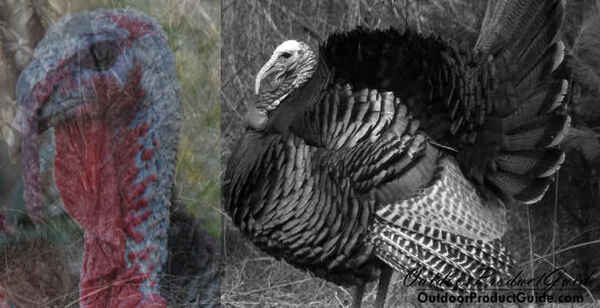Even though many hunters avoid it, afternoon hunting is a feast-or-famine activity. There is no doubt that morning hours are when the majority of turkeys are heard, seen, and killed. One of the most fruitful times to be in the turkey woods is in the afternoon when turkeys are most active. Learn how to go on more afternoon turkey hunts by reading this article.
Turkey
The turkey is a large bird in the genus Meleagris, native to Two varieties of turkey that are still alive in North America: the wild turkey (Meleagris gallopavo) of eastern and central North America and the ocellated turkey (Meleagris ocellata) of Mexico’s Yucatán Peninsula.
Both species of turkey males have a distinctive fleshy wattle that hangs from the top of the beak, known as a snood. They rank among the biggest birds in their respective ranges.
The male of the order Galliformes, which includes many large ground-feeding birds, is larger and more colorful than the female.
More than 20 million years ago, the first turkeys began to evolve in North America. Grouse, pheasants, and other birds have a recent common ancestor with them.
The domestic turkey, which was brought into domestication about 2,000 years ago, descended from a wild species.
Tips For Hunting Turkey In The Afternoon
Finding Patterns For Afternoon Turkey Hunting
A turkey cannot be killed if there are no turkeys in the area where you are hunting, to start with. Locate the birds, and then focus on the patterns those birds follow in the late afternoon.
You’re prepared to go hunting if you have birds and understand a general pattern of where they hang out in the afternoon.
I’ve noticed that birds like to visit the fields in the afternoons before returning to the roost to soar up. You can usually spot your birds to find out what time of day they prefer to use a particular field if you can glass food plots and fields.
Field to field and flock to flock variations will occur in this. I’ll get in and set up before I anticipate any birds being in the field once I have a basic understanding of the pattern of when the birds prefer to enter the field.

It can be challenging to arrive at the field before the birds. It’s simple to get caught trying to sneak in to set up. Enter the building sooner than you anticipate.
(Read more: how to shoot a turkey with a bow)
Follow His Crop
Without a doubt, during the breeding season, gobblers favor romance over nutrition. However, their high-horsepower sex drive necessitates the occasional pit stop for refueling—typically right after fly-down and an hour or so before retiring to roost.
Consider taking up residence in well-known feeding areas, such as wide-open spaces close to water sources.
The tom may not roost here, but he is likely to come here to rest when the need for his breeding services declines. If he’s still focused on the ladies, know that they’re just as likely to eat here in the evening before bed and drag him into shotgun range.
Don’t Blow Up The Roost
Many men will locate a turkey’s roost and proceed to sit at the tree in order to be there for him when he returns. The outcome is uncertain, but the pattern these turkeys are following will be severely disrupted.
Consider the fact that you have roosting birds on your hunting property. That is how you want it to remain. The best way to get your birds to fly off onto a neighboring property is to blow up the roost by busting birds at their roost tree.
These birds should be able to rest peacefully there every day if you want them to.
So, regardless of how your hunt turns out, move back from the roost a distance that will still allow them to reach the roost tree. As previously stated, observe these birds’ flight patterns and other habits as they fly back to the nest, but act before they arrive.
The Afternoon Turkey Hunting Setup
It is crucial to set up for successful afternoon turkey hunting. I always use a jake decoy and frequently place a hen decoy next to it. I tie a piece of fishing line around the head of my jake to enable me to keep it moving while I try to draw birds near me.
When it comes to decoys, movement is the secret to success. Older birds usually keep their distance and keep an eye out for movement of any decoys they come across. Young birds are frequently fooled by a stationary decoy.
Too many birds have flown past me when my decoys have remained still. In order to move both of my hen decoys simultaneously, I also allow the fishing line to rest on the back of the decoy. I position myself between 7 and 10 yards away from my decoys, using some brush to help disguise my position.
I like to position myself so the birds will fly right by me as they approach the decoys. In order to increase camouflage and to soften the outline of my bow and body, I’ve also added artificial foliage or ivy to it. I simply lack human form and appear to be sitting there like a bush.
Low Key Calling For Afternoon Turkey Hunting
An afternoon hunt should also take calling into account. In the afternoon, calling can make or break a successful gobbler hunt. Don’t go overboard in this area. To keep things light, I like to call every 15 minutes or so.
Usually, all I do is cluck and purr, with the occasional soft yelp. Avoid getting overly excited when making a call in the afternoon. Contrary to what you might hear in the early morning, it is not natural. They simply don’t talk as much in the afternoons.

